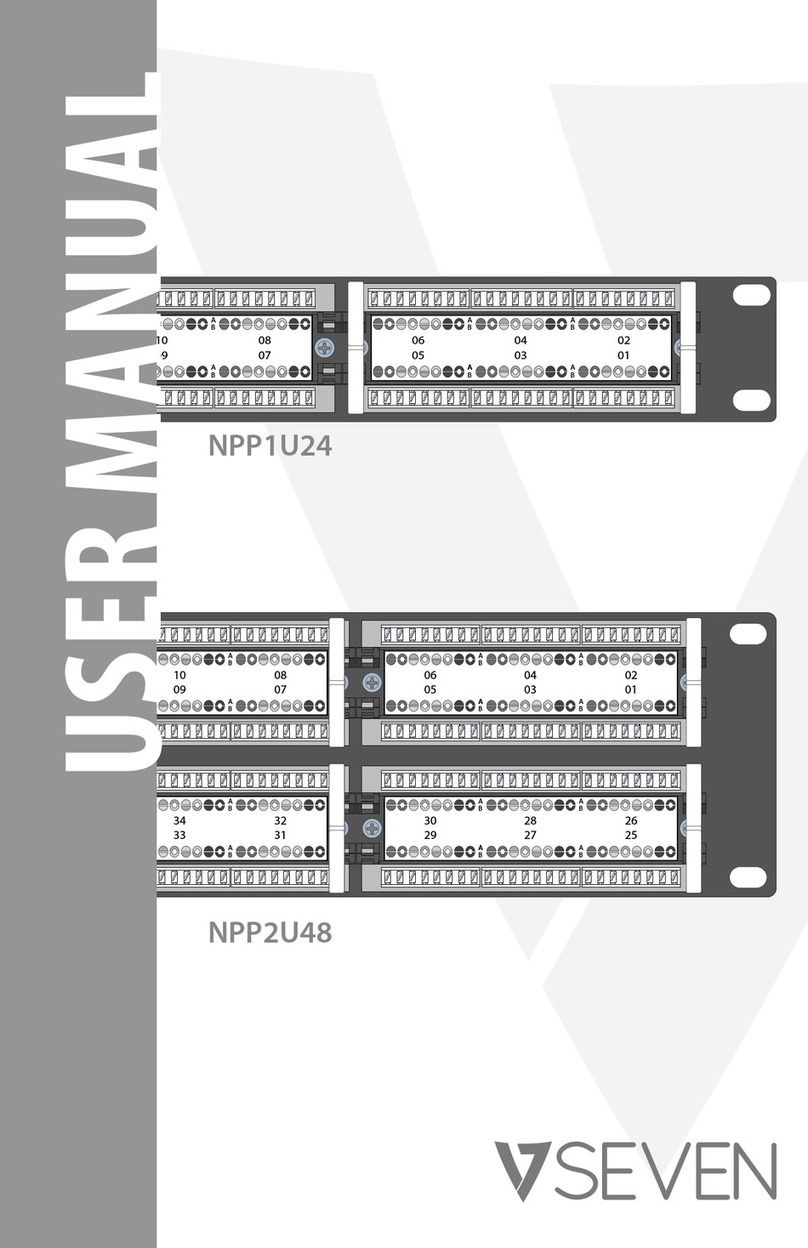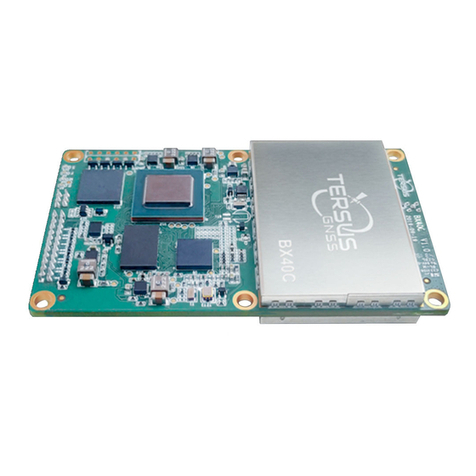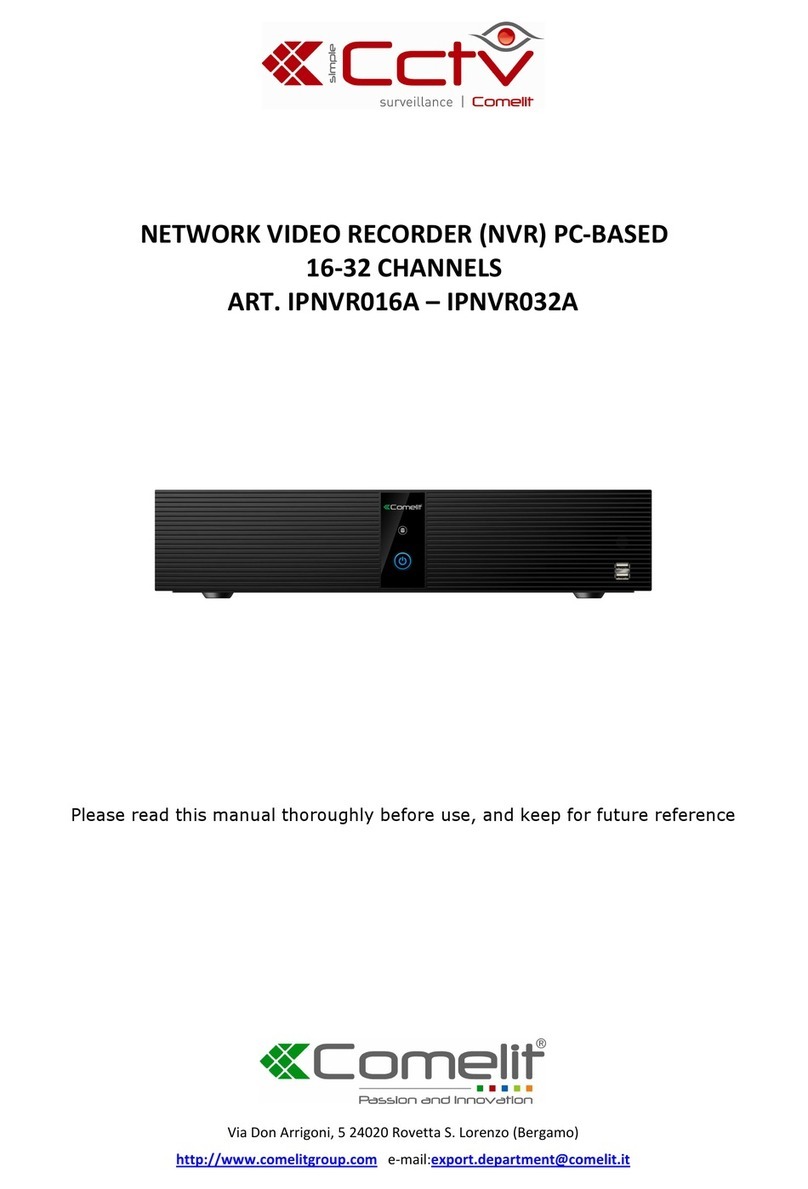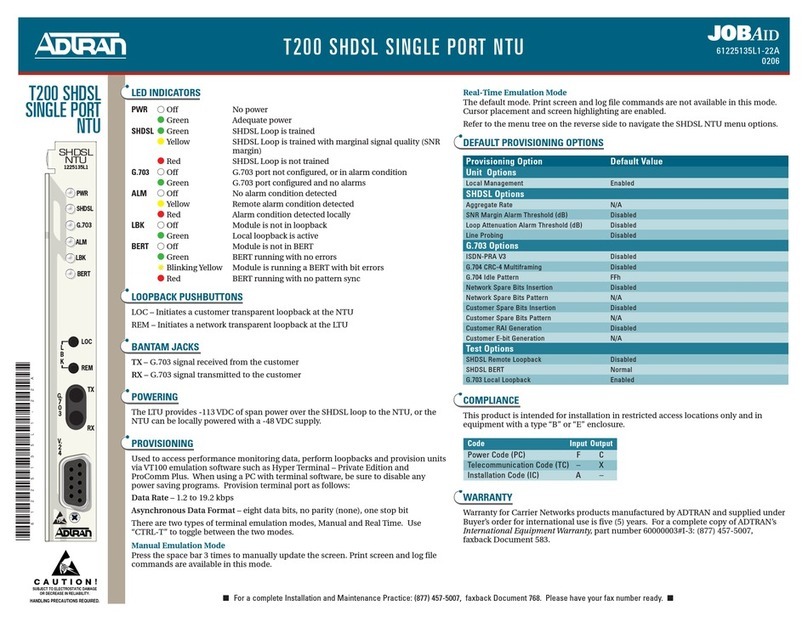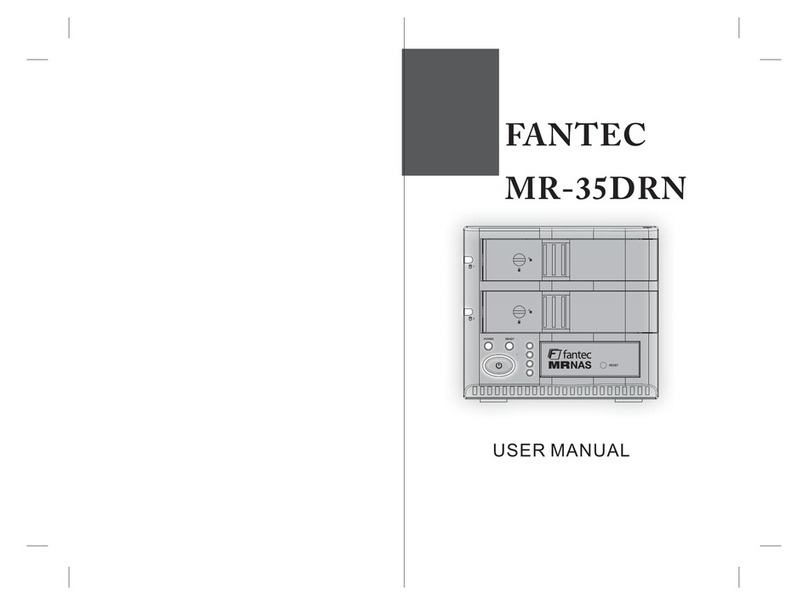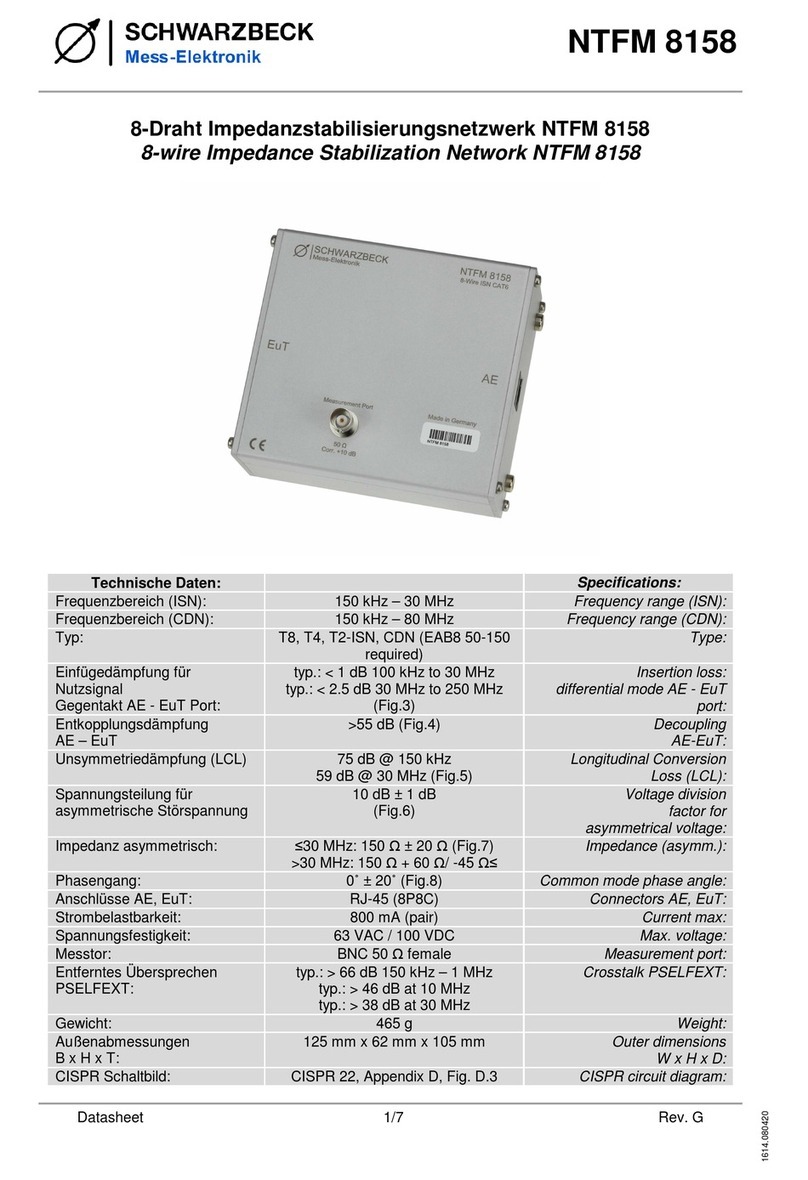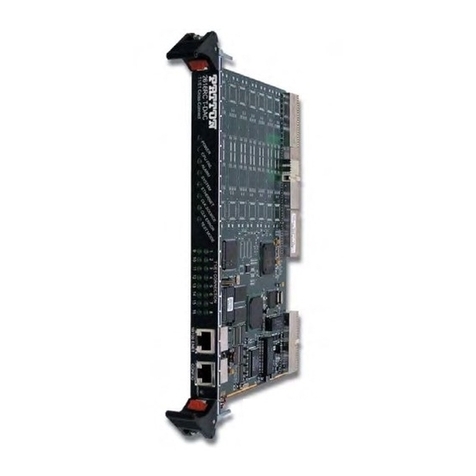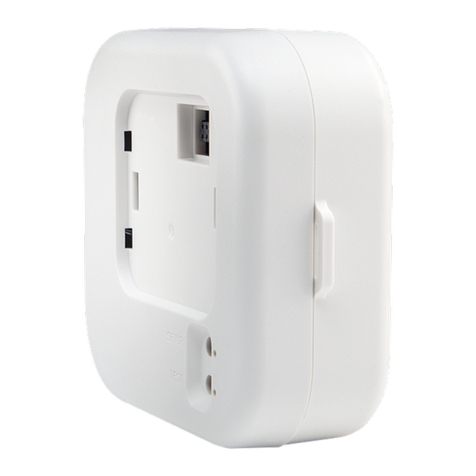SEVEN WR-ZEN Series User manual

Chapter 1: Introduction
2
v3.3-a 12/07/2022

Chapter 1: Introduction
3
v3.3-a 12/07/2022
Revisions
Rev
Date
Description
V3.0-a
24-Jul-2020
Fully updated documentation of wr-zynq-os-3.0 for WR-Z16 family
V3.1-a
30-Oct-2020
Improve PTP profiles + sync-E configuration, add new VCS code and fix
some OID errors
V3.1-b
26-Jan-2021
Fixing missing references in the document
V3.2-a
05-Apr-2022
Improving LLDP and NTP section
Adding new section (Timing outputs) for ZEN family
V3.3-a
12-Jul-2022
System reliability improved, security and authentication (including web
GUI) update and new features, time of day (ToD) daemon support, bug-
fixes

Chapter 1: Introduction
4
v3.3-a 12/07/2022
Acronyms
Acronyms
Description
BC
Boundary Clock (Disciplined by a master and discipling slaves)
BMCA
Best Master Clock Algorithm
FR
Free Running (Undisciplined local oscillator)
GLONASS
Globalnaya Navigatsionnaya Sputnikovaya Sistema
GM
Grand Master
GNSS
Global Navigation Satellite System
GPS
Global Positioning System
HA
High Accuracy
HO
Hold-Over
HTTP
Hypertext Transfer Protocol
NMEA
National Marine Electronics Association
NMS
Network Management System
NTP
Network Time Protocol
PPS
Pulse Per Second
PTP
Precision Time Protocol
PWS
Power Supply
RTT
Round Trip Time
SFP
Small Form-factor Pluggable Transceiver for fiber link
SSH
Secure Shell
SNMP
Simple Network Management Protocol
SyncE
Synchronous Ethernet
TAI
International Atomic Time (Temps Atomique International)
ToD
Time of Day
UTC
Coordinated Universal Time
WR
White Rabbit
WR-ZEN
White Rabbit Zynq Embedded Node
WR-LEN+
White Rabbit Lite Embedded Node Plus
WRZ-OS
White Rabbit Zynq based (Z16, ZEN, LEN+) Operative System

Chapter 1: Introduction
5
v3.3-a 12/07/2022
Highlights legend
To make important information stand out from the documentation some boxes have been
created. The information to highlight has been categorized into 4 groups:
Warning
Information that warns the user about configurations/actions that could reach possible
malfunction or damage.
Note/Caution
Relevant information to take into account during management of the device
Info
Additional information that provides more details about a specific functionality
Tips
Recommendation to improve the performance or ease the management of the device

Chapter 1: Introduction
6
v3.3-a 12/07/2022
Table of Content
REVISIONS ................................................................................................................................................................ 3
ACRONYMS ............................................................................................................................................................... 4
HIGHLIGHTS LEGEND ........................................................................................................................................... 5
TABLE OF CONTENT.............................................................................................................................................. 6
CHAPTER 1: INTRODUCTION....................................................................................................................... 11
1.1 ABOUT THIS DOCUMENT .................................................................................................................11
1.2 ABOUT WR ZEN FAMILY................................................................................................................12
1.3 ABOUT WRZ-OS .............................................................................................................................14
1.4 ABOUT WHITE RABBIT /HIGH-ACCURACY TECHNOLOGY ..........................................................15
CHAPTER 2: PRODUCT DESCRIPTION ...................................................................................................... 16
2.1 FRONT PANEL ...................................................................................................................................16
2.2 BACK PANEL .....................................................................................................................................22
2.3 MONITORING LEDS.........................................................................................................................24
2.3.1 GENERAL STATUS..................................................................................................................... 24
2.3.2 SFP PORTS ................................................................................................................................ 25
2.4 PRODUCT SPECIFICATIONS..............................................................................................................25
2.4.1 WR-ZEN TP............................................................................................................................. 25
2.4.2 WR-ZEN TP-FL...................................................................................................................... 27
2.4.3 WR-ZEN TP-32BNC............................................................................................................. 28
2.5 SAFETY NOTES .................................................................................................................................29
2.6 INSTALLING THE SWITCH IN A RACK ..............................................................................................30
2.7 REGULATORY COMPLIANCE ............................................................................................................32
2.7.1 EMC............................................................................................................................................ 32
2.7.2 SAFETY ....................................................................................................................................... 32
2.7.3 ROHS.......................................................................................................................................... 32
CHAPTER 3: DEVICE CONNECTIVITY ........................................................................................................ 33
3.1 DEFAULT CONFIGURATION..............................................................................................................33
3.2 NECESSARY ITEMS FOR CONNECTIVITY ..........................................................................................33
3.3 CONNECTING TO THE DEVICE ..........................................................................................................33
3.3.1 LOGGING FROM UART............................................................................................................. 34
3.3.2 LOGGING FROM SSH ................................................................................................................ 34
3.3.3 ON LINUX (UBUNTU 18.04 LTS) ......................................................................................... 35

Chapter 1: Introduction
7
v3.3-a 12/07/2022
3.3.4 ON WINDOWS ........................................................................................................................... 37
3.4 LOGGING FROM WEB ........................................................................................................................40
CHAPTER 4: GUI & CLI TOOLS ..................................................................................................................... 43
4.1 INTRODUCTION TO PARAMETERS API...........................................................................................43
4.1.1 TABLE REPRESENTATION........................................................................................................ 44
4.2 THE WEB GUI...................................................................................................................................45
4.2.1 NETWORK CONFIGURATION FROM WEB ............................................................................... 47
4.3. CLI CONFIGURATION:WRZ_CONFIG ................................................................................................50
4.3.1 NETWORK CONFIGURATION FROM CLI ................................................................................ 51
4.4 CLI MONITORING:GPA_CTRL .........................................................................................................53
4.4.1 LISTING PARAMETERS ............................................................................................................. 53
4.4.2 APPLYING CHANGES ONLINE................................................................................................... 55
4.4.3 OTHER FUNCTIONALITIES ....................................................................................................... 55
4.5 OTHER CLI TOOLS ...........................................................................................................................57
CHAPTER 5: TIMING ....................................................................................................................................... 58
5.1 MULTI-SOURCES &RESILIENCY ......................................................................................................58
5.1.1 TIMING SOURCES ...................................................................................................................... 58
5.1.2 FOCA: THE FAILOVER CLOCK ALGORITHM......................................................................... 59
5.1.3 VIRTUAL CLOCK OVERVIEW ................................................................................................... 61
5.2 GENERAL TIMING MANAGEMENT ...................................................................................................63
5.2.1 PRESETS ..................................................................................................................................... 63
5.2.2 REFERENCE TOPOLOGY ........................................................................................................... 68
5.2.3 TIMING SOURCE INFO............................................................................................................... 70
5.3 WHITE RABBIT ................................................................................................................................73
5.3.1 CONFIGURATION....................................................................................................................... 73
5.3.2 INFO/OVERVIEW...................................................................................................................... 73
5.4 IEEE 1588-2008 (PTPV2) .........................................................................................................77
5.4.1 LICENSE...................................................................................................................................... 77
5.4.2 CONFIGURATION....................................................................................................................... 78
5.4.3 INFO/OVERVIEW...................................................................................................................... 84
5.5 EXTERNAL REFERENCE (GM).........................................................................................................87
5.5.1 CONFIGURATION....................................................................................................................... 87
5.5.2 INFO/OVERVIEW...................................................................................................................... 89
5.6 NTP ..................................................................................................................................................90
5.6.1 CONFIGURATION....................................................................................................................... 90
5.6.2 INFO/OVERVIEW...................................................................................................................... 91
5.6.3 STRATUM LEVELS..................................................................................................................... 92
5.7 TIMING OUTPUTS .............................................................................................................................93
5.8 HOLDOVER (OPTIONAL)..................................................................................................................96
5.8.1 CONFIGURATION....................................................................................................................... 97
5.8.2 INFO/OVERVIEW...................................................................................................................... 98
5.9 MISCELLANEOUS ........................................................................................................................... 100

Chapter 1: Introduction
8
v3.3-a 12/07/2022
5.9.1 UPDATE LEAP SECONDS FILE...............................................................................................100
CHAPTER 6: SECURITY & AUTHENTICATION ......................................................................................102
6.1 PASSWORD MANAGEMENT........................................................................................................... 102
6.2 UPLOAD SSH KEYS........................................................................................................................ 103
6.3 HTTPS .......................................................................................................................................... 103
6.4 TACACS+ ..................................................................................................................................... 106
6.4.1 VERIFICATION OF TACACS+ INSTALLATION ....................................................................106
6.4.2 TACACS+ CLIENT CONFIGURATION...................................................................................107
6.5 RADIUS ........................................................................................................................................ 109
6.5.1 RADIUS CONFIGURATION FILES..........................................................................................109
6.5.2 VERIFICATION OF RADIUS INSTALLATION .......................................................................109
6.5.3 RADIUS CLIENT CONFIGURATION ......................................................................................110
6.6 FIREWALL ...................................................................................................................................... 113
6.6.1 EXAMPLE TO ONLY ALLOW A SPECIFIC IP FOR MANAGEMENT........................................113
CHAPTER 7: MONITORING & LOGGING ..................................................................................................114
7.1 SYSLOG........................................................................................................................................... 114
7.1.1 SESSION LOGS..........................................................................................................................114
7.1.2 PERMANENT LOGS..................................................................................................................115
7.1.3 REMOTE LOGS .........................................................................................................................115
7.1.4 LOGGING TOOLS ......................................................................................................................115
7.1.5 CONFIGURATION.....................................................................................................................117
7.2 SNMP ............................................................................................................................................ 117
7.2.1 CONFIGURATION.....................................................................................................................118
7.2.2 SNMP TRAPS..........................................................................................................................123
7.3 LLDP ............................................................................................................................................. 128
7.3.1 STANDARD (IEEE 802.1AB-2005) TLVS.......................................................................128
7.3.2 CONFIGURATION.....................................................................................................................128
7.3.3 INFO/OVERVIEW....................................................................................................................129
7.4 HEALTHING ................................................................................................................................... 131
7.4.1 INFORMATION/OVERVIEW...................................................................................................131
7.4.2 CONFIGURATION.....................................................................................................................133
7.5 LCD SCREEN MENU ....................................................................................................................... 134
7.5.1 SCREEN SAVER........................................................................................................................134
7.5.2 MAIN SCREEN .........................................................................................................................134
7.5.3 MAIN MENU ............................................................................................................................135
7.6 EXTERNAL MONITORING TOOL..................................................................................................... 139
CHAPTER 8: DEVICE MAINTENANCE.......................................................................................................142
8.1 LICENSES........................................................................................................................................ 142
8.1.1 LIST OF RELATED LICENSES..................................................................................................142

Chapter 1: Introduction
9
v3.3-a 12/07/2022
8.1.2 CHECK LICENSES ....................................................................................................................142
8.1.3 ORDER LICENSES....................................................................................................................144
8.1.4 LOCAL LICENSES MANAGEMENT .........................................................................................144
8.1.5 LICENSE SERVER.....................................................................................................................147
8.2 FIRMWARE UPDATE ..................................................................................................................... 149
8.2.1 HARDWARE VERSION AND FIRMWARE ...............................................................................149
8.2.2 USING WEB INTERFACE.........................................................................................................150
8.2.3 USING SSH/SCP ....................................................................................................................151
8.3 RECOVERY MODE.......................................................................................................................... 152
8.3.1 MANUAL RECOVERY MODE ...................................................................................................153
8.4 FACTORY CONFIG MODE .............................................................................................................. 154
8.5 FAILSAFE MODE ............................................................................................................................ 155
CHAPTER 9: TROUBLESHOOTING............................................................................................................156
9.1 FREQUENTLY ANSWERED QUESTION (FAQ).............................................................................. 156
9.2 HEALTH GENERAL STATUS ........................................................................................................... 157
9.3 VIRTUAL STATE CLOCK CODE ERROR......................................................................................... 157
9.4 HOW TO REPORT AN ERROR........................................................................................................ 158
9.5 RSYSLOG TEMPLATE TO IMPROVE REMOTE LOGIN .................................................................... 158
9.6 WARRANTY ................................................................................................................................... 160
9.7 CONTACT ....................................................................................................................................... 160
CHAPTER 10: APPENDIX................................................................................................................................161
10.1 VCS CODE ................................................................................................................................... 161
10.1.1 GRAND MASTER (GM VCS CODE)....................................................................................161
10.1.2 BOUNDARY CLOCK (BC VCS CODE).................................................................................162
10.1.3 OTHERS .................................................................................................................................165
10.2 FAILOVER SCENARIOS................................................................................................................. 167
10.3 PERSISTENT CUSTOM FILES ...................................................................................................... 167
10.4 TIMING OUTPUTS ....................................................................................................................... 168
10.5 TACACS+ AND RADIUS SERVER CONFIGURATION ................................................................ 169
10.5.1 TACACS+ SERVER INSTALLATION AND CONFIGURATION ............................................169
10.5.2 RADIUS SERVER INSTALLATION AND CONFIGURATION ...............................................170

Chapter 1: Introduction
10
v3.3-a 12/07/2022

Chapter 1: Introduction
11
v3.3-a 12/07/2022
Chapter 1: Introduction
1.1 About this Document
This document corresponds to the user guide of the WR-ZEN family. It describes the essential
information about the WR-ZEN TP hardware, its features, and the configuration options.
It has been written to allow users who have their first contact with the device to easily connect
it to the management network and distribute precise timing (PTP or WR) through its optical
interfaces. It also provides advanced tips for expert users and/or details how to match the
security policies defined at your company.
This is the set of official manuals provided along with the present document, for complementing
the documentation about the WR-ZEN family.
●WRZ-OS API guide

Chapter 1: Introduction
12
v3.3-a 12/07/2022
1.2 About WR ZEN Family
The White Rabbit ZEN Time Providers (aka. WR-ZEN TP) are high performance timing nodes family
whose design is based on the Xilinx Serie-7 FPGAs that combines an Artix-FPGA with a Dual-Core
ARM.
It is composed of the next products:
•WR-ZEN TP
•WR-ZEN TP-32BNC
•WR-ZEN TP-FL
They are the versatile standalone nodes that provide WR features (i.e., sub-nanosecond time
synchronization in a network with thousands of nodes) controlled by a user-friendly Linux OS
which runs on a dual ARM processor.
The WR-ZEN TP easily distributes time and frequency to other equipment by implementing
standard timing protocols such as PTP, NTP and IRIG-B. The WR-ZEN TP combines ultra-stable
clocks with low jitter and temperature compensated clock resources to enhance its
synchronization accuracy. In addition, it allows integrating FMC cards.
Its robustness to failure is one of its key features thanks to redundant dual power supply and a
fanless design.
It is also worth mentioning its ability to support daisy chain configurations in which each WR-ZEN
TP device synchronizes with another WR-ZEN TP belonging to a higher order in the hierarchy
level. At the same time, it provides synchronization to a lower level.

Chapter 1: Introduction
13
v3.3-a 12/07/2022
A typical intra-datacenter network topology is shown in the figure below, where the WR-ZEN
family devices work as Boundary Clocks and are key elements for distributing the timing through
each cabinet of the datacenter. Different end nodes are included in the diagram to illustrate the
interoperability with different interfaces.
Figure 1 - Intra-datacenter WR network topology
There are different options and licenses which enable specific functionalities of the WR-ZEN
family. These options are described in the table below:
Option /License
Description
Holdover option
An optional holdover oscillator can be included to maintain
high accuracy (<1.5us/24h) even when all timing references
are down.
PTP license
The device is shipped with the default profile of
PTPv2/IEEE1588-2008. Other configuration including specific
profiles support requires activation license.
HATI license
Enable the WR-ZEN to provide high accuracy synchronization
to the HATI FPGA IP CORE. This license might be available per
port or within a pack.
Table 1:1 - Options and Licenses available in WR-ZEN

Chapter 1: Introduction
14
v3.3-a 12/07/2022
1.3 About WRZ-OS
The WR-ZEN family is part of a full ecosystem of products which allows to maintain the sub-
nanosecond accuracy in the synchronization from the external time reference to the end nodes
of the timing network, where different timing interfaces are provided to interoperate with third-
party equipment.
Specifically, the WR-Z16 devices and the WR-ZEN family (WR-ZEN TP, WR-ZEN TP-FL, WR-ZEN TP-
32BNC) run on the same platform (WRZ-OS) sharing the same features, timing stack and set of
tools.
All the devices running this WRZ-OS provide multiple interoperability options that include
1PPS/10 MHz signals, standard PTP and NTP. They support SNMP v2/v3, rsyslog and have an
integrated web GUI for intuitive management and enhanced command line tools for advanced
users. The following list contains the different form factors offered within the WR-ZEN family
and a brief description of their main characteristics:

Chapter 1: Introduction
15
v3.3-a 12/07/2022
1.4 About White Rabbit / High-Accuracy Technology
One of the key-feature of the WR-ZEN family is that it fully supports the White Rabbit protocol,
an extension of the IEEE 1588 (PTP), to achieve ultra-accurate sub-nanosecond synchronization
in Ethernet-based networks. Since the publication of the new IEEE 1588-2019, White Rabbit is
also known as “PTP High Accuracy” (HA) profile with the following characteristics:
•Time Precision: WR/HA provides a common clock for physical layer in the entire network,
allowing synchronization at sub-nanosecond level with picoseconds precision. In other
words, the timing budget consumed by WR/HA is almost insignificant.
•Scalability: WR/HA networks are designed to be highly scalable supporting thousands of
nodes and long-distance links within the range of metro area deployments. Its
performance is not affected by traffic as other PTP profiles.
•Cost effective solution: WR/HA avoid expensive costs related to calibration and complex
deployments with high requirements of maintenance, allowing plug-and-play links in
Local Area Networks (LANs).
•Integration: WR/HA is based on existing protocols and standards (such as PTP, Ethernet)
so it is very easy to integrate in the existing network infrastructure.

Chapter 2: Product description
16
v3.3-a 12/07/2022
Chapter 2: Product description
2.1 Front panel
Figure 2 WR-ZEN TP front panel
#
Name
Information
Ref.
#1
2x Management
Ethernet (RJ45)
10/100/1000 ethernet network interface (eth0
& eth1)
§0 (§0, §0)
#2
FMC expansion port
Slot placed to allow the use of FMC cards
§0
#3
2x SFP Fiber Ports
1GBps SFP compatible
§0, §0
#4
1x ARM Mini-USB (B)
UART
Serial UART Mini-USB (B)
Timing output
#5
10 MHz output
SMA connector (F)
Output from PLL
High level output: 2.5V
(with 50 Ω termination)
§0
#6
CLK TTL output
SMA connector (F)
High level output: 2.5V +/-0.2V
(with 50 Ω termination)
By default, it is configured to output 10MHz
#7
PPS output
SMA connector (F)
§0

Chapter 2: Product description
17
v3.3-a 12/07/2022
Digital output
High level output: 2.5V +/-0.2V (with 50 Ω
termination)
Timing input
#8
PPS input
SMA connector (F)
50 Ω termination
TTL input (3.3V)
§0
#9
10 MHz input
●SMA connector (F)
●50 Ω termination
●1 Veff (+/-30%) sine wave
§0
#10
LED
●Red: error LED
●Green: Status LED
§0
#11
DB9 PPx/CLK A
High level output: 1.7V +/-0.2V
(with 50 Ω termination)
#12
DB9 PPx/CLK B
Selectable 50 Ω termination
High level output: 3.0V +/-0.2V
(with 50 Ω termination)
High level output: 3.3V +/-0.2V
(without 50 Ω adaptation)
#13
TOD0
RJ45 RS422
Time of Day / NMEA
#14
TOD1
RJ45 RS422
Time of Day / NMEA
#15
INFO/CTRL Button
Button used to access to information a control
settings
#16
LCD Display
Panel for alert & configuration information
#17
Power/Reset Alarm
button
Power On/Off the device and perform a factory
reset
§0
Table 2:1- Front Panel of the WR-ZEN TP Legend

Chapter 2: Product description
18
v3.3-a 12/07/2022
Figure 2:2 WR-ZEN TP 32-BNC front panel
#
Name
Information
Ref.
#1
2x Management
Ethernet (RJ45)
10/100/1000 ethernet network interface (eth0 &
eth1)
§0 (§0,
§0)
#2
FMC expansion port
Slot placed to allow the use of FMC cards
#3
2x SFP Fiber Ports
1GBps SFP compatible
§0, §0
#4
1x ARM Mini-USB (B)
UART
Serial UART Mini-USB (B)
Timing output
#5
10 MHz output
SMA connector (F)
Output from PLL
High level output: 2.5V
(with 50 Ω termination)
§0
#6
CLK TTL output
SMA connector (F)
High level output: 2.5V +/-0.2V
(with 50 Ω termination)
By default, it is configured to output 10MHz
#7
PPS output
SMA connector (F)
Digital output
High level output: 2.5V +/-0.2V (with
50 Ω termination)
§0

Chapter 2: Product description
19
v3.3-a 12/07/2022
Timing input
#8
PPS input
SMA connector (F)
50 Ω termination
TTL input (3.3V)
§0
#9
10 MHz input
●SMA connector (F)
●50 Ω termination
●1 Veff (+/-30%) sine wave
§0
#10
A
8x Configurable
PPS/10 MHz
BNC connector (F)
Digital output
High level output: 1.7V +/-0.2V
(with 50Ω termination)
#10
B
8x Configurable
PPS/10 MHz
BNC connector (F)
Digital output
High level output: 1.7V +/-0.2V
(with 50Ω termination)
#10
C
8x Configurable
PPS/10 MHz
BNC connector (F)
Digital output
High level output (Selectable 50Ω termination):
3V +/-0.2V (with 50Ω termination)
3.3V +/-0.2V (without 50Ω adaptation)
#10
D
8x Configurable
PPS/10 MHz
BNC connector (F)
Digital output
High level output (Selectable 50Ω termination):
3V +/-0.2V (with 50Ω termination)
3.3V +/-0.2V (without 50Ω adaptation)
#11
LED
Red: error LED
Green: Status LED
§0
#12
LCD Display
●Panel for alert & configuration information
#13
INFO/CTRL Button
Button used to access to information a control
settings
#14
Power/Reset Alarm
button
Power On/Off the device and perform a factory
reset
§0
#15
1x Management UART
(RJ45)
Serial UART RS232 on a RJ45 connector with pinout
Pin#1: ✖
Pin#2: ✖
Pin#3: RXD
Pin#4: GND
§0 (§0)

Chapter 2: Product description
20
v3.3-a 12/07/2022
Pin#5: ✖
Pin#6: TXD
Pin#7: ✖
Pin#8: ✖
(USB-RJ45/RS232 adaptor not included)
Power Supply
#16
L
Power Supply #1
Swappable & monitorable module:
-100-240VAC, 50-60Hz, (80W Max)
§0
#16
R
Power Supply #2
Swappable & monitorable module:
-100-240VAC, 50-60Hz, (80W Max)
§0
#17
Ground
Ground connector of the device
§0
Table 2:2- Front Panel of the WR-ZEN TP 32-BNC Legend
Figure 2:3 WR-ZEN TP-FL front panel
#
Name
Information
Ref.
#1
2x Management
Ethernet (RJ45)
10/100/1000 ethernet network interface (eth0 &
eth1)
§0 (§0,
§0)
#2
FMC expansion port
Slot placed to allow the use of FMC cards
This manual suits for next models
1
Table of contents
Other SEVEN Network Hardware manuals
Popular Network Hardware manuals by other brands

TP-Link
TP-Link M7350 Quick installation guide
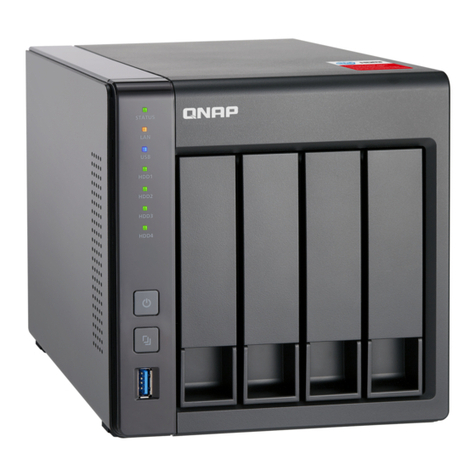
QNAP
QNAP TurboNAS Quick installation guide
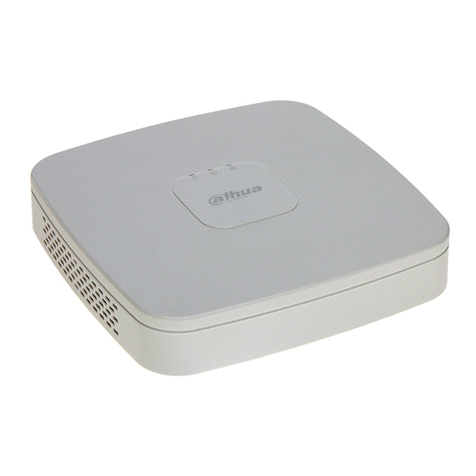
Dahua
Dahua NVR4108-P user manual
Freescale Semiconductor
Freescale Semiconductor CodeWarrior TAP user guide
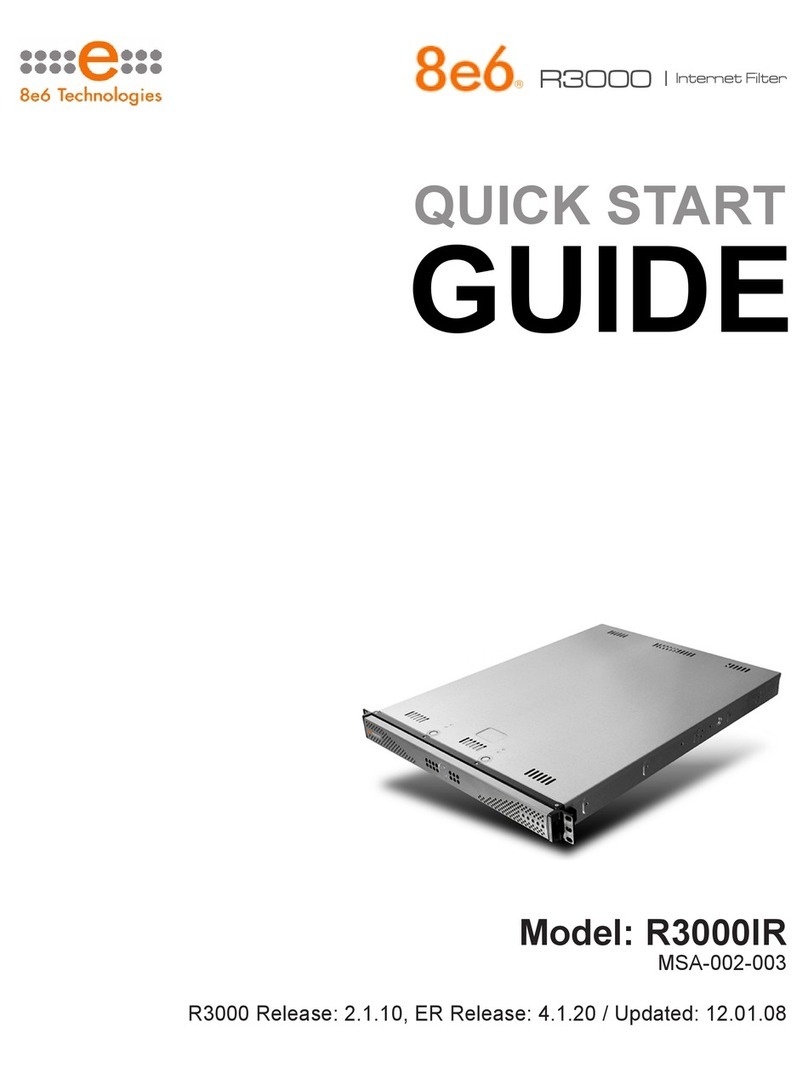
8e6 Technologies
8e6 Technologies Enterprise Filter R3000IR quick start guide
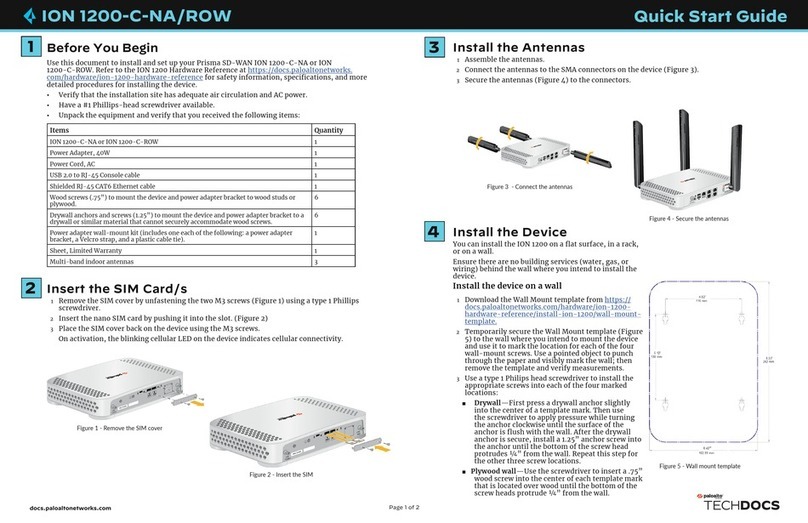
PaloAlto Networks
PaloAlto Networks ION 1200-C-NA/ROW quick start guide

